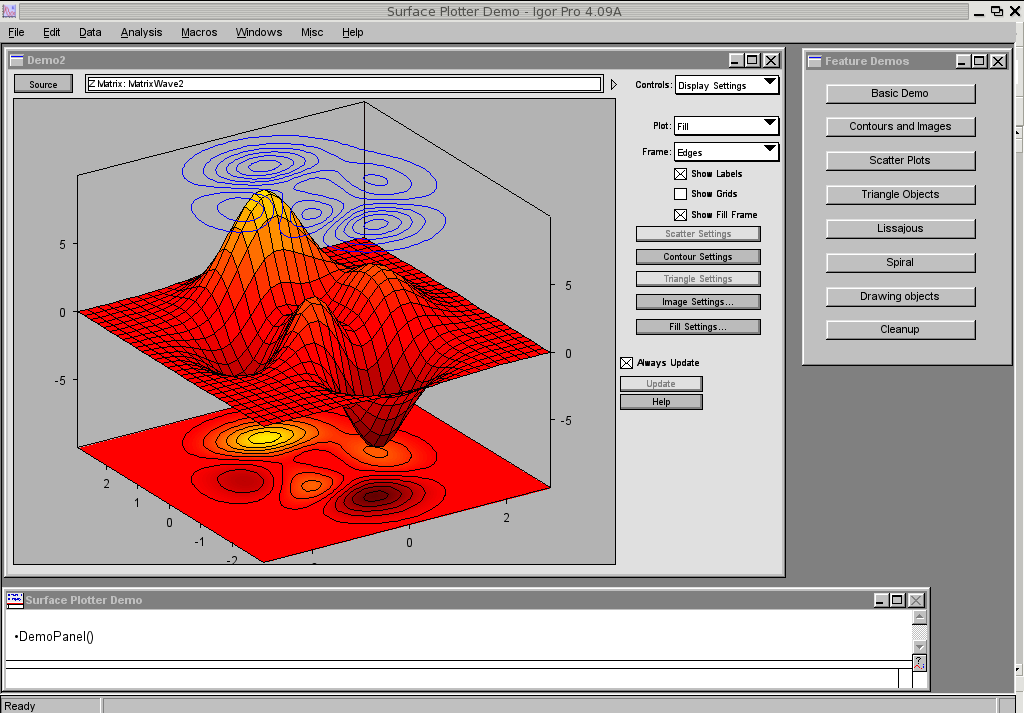

- #Vertically concatenate in igor pro full#
- #Vertically concatenate in igor pro code#
- #Vertically concatenate in igor pro series#

Hence the copy.ĭuplicate /O OriginalRawImage root:RawImage / WAVE=RawImage I accidentially messed up the image and had to reload it a few times. Works on a copy of the original image. Wave OriginalRawImage=root:OriginalRawImage You need to copy your image to this location
#Vertically concatenate in igor pro code#
I'm sure the code can be optimized, but I didn't care about that. The data before and after the correction will be displayed by CreateGraphs() together with the radial profile and the recreated image based on the radial profile.Įxpect CreateGraphs() to take 10-20 seconds and FindRadialCenter() to take several minutes.
#Vertically concatenate in igor pro full#
Your raw data is full of NaNs and +/-INFs so CreateGraphs() first extrapolates what those values should be based on the nearest valid data points. Run CreateGraphs() first to display the data and then FindRadialCenter() to extract the radial profile and find the center of the circles. The code only works with circular symmetry, but I'm sure you can add an extra fit parameter to make it work for ellipses as well. You can then fit your peaks to the radial profile instead.įor my code to work your image has to be root:RawImage. The nice thing about this approach is that you don't need to assume anything about your peak shapes, only that you have circular symmetry. You can now use the difference between the real image and the recreated image to write a fit function and find the center of the circles and the radial profile, see the code below. I would then extract a radial profile from that and use that radial profile to recreate the image. My approach to fully automate this would be to pick the center of the image as a starting guess for the center of the circles. I hope that I can use fit functions or other better techniques to get the radii and center. However, this takes really a lot of time. Then, I change the radii and center of the dummy image and repeat the multiplication and sum process to find the biggest value, which should correspond to the most similar dummy image. I have tried to make a dummy binary image with rings (in ring value = 1, out ring value = 0) and multiplied to the image I posted. The sum of the multiplied image will be a value showing the similarity between the dummy and real one. and there are always grid lines (value = -1 or -2) that are the space between detector panels. the center sometimes outside the image.ģ. the rings are not always circles, they could be ellipses.Ģ.
#Vertically concatenate in igor pro series#
I need to know the center and radii of these rings to perform a series of other reduction process.ġ. You guess is correct. The image is a 2D scattering pattern from a standard chemical compound. Dealing with the interruptions from the grid lines will be a real PITA in this case. When the theta variation is also important, I might start with the radial slice as the guess in the radial parameters, hold those constant, and fit a 3-D profile that includes only the theta variation. As the final step, I would take an 360 degree rotation around the center, sum all slices for the best S/N, and fit that resulting profile. As the next step, I would slice a few radial lines, average them, and improve the S/N for fitting. In this case, I would find the center of the image, make a radial slice through it, and fit the resulting line profile. I am going to go out on a limb and hazard a guess: the most important variation is radial (this is some type of radially averaged diffraction pattern. Wide-Angle Neutron Spin Echo Spectroscopy.


 0 kommentar(er)
0 kommentar(er)
